You can follow the.lostplaces abandoned adventures
on Instagram @the.lostplaces and Twitter @peakdistrictand
Where the curiosity never ends…
St Mary, Arminghall
Exploring St Mary’s alone, I found it to be a pretty and peaceful little church. My visit was just before Christmas, and dotted around were the remnants of faded poinsettias along with a Christmas tree that lay on its side obscuring the font. Whilst photographing the chancel I heard the sound of someone coming into the building and turned to see who was there. I half expected to see the warden coming to clear away the plants and the tree, but instead I was greeted by the empty nave beyond. To whom or what those footsteps belonged I do not know and it remains a mystery. The church, however, has such a lovely atmosphere that I am in no doubt that whoever it was would have been of a friendly persuasion.

.jpeg)
In 1876 the church went through major renewal and restoration carried out by John Pollard Seddon. Seddon was a pupil of the classical architect, Thomas Leverton Donaldson, but took much of his inspiration from the work of Gothic Revivalist, John Ruskin, and the pre-Raphaelite movement, with which he had a close association. As part of these works, Seddon not only added the south porch but also installed the 15th century poppy head bench ends to the chancel stalls and renewed much of the original 13th century west tower. He also created the boarded ceiling and defined the division between chancel and nave with a simple arched screen of traceried pierced spandrels.
On the south wall of the chancel is a large 17th century monument to John Hearne – or Heron, as he was also known, hence the helmet atop the memorial crowned with a white bird’s head. Hearne trained as a lawyer at Lincoln’s Inn and was called to the
bar in 1618. Despite a successful career, that included the high-profile trials of government critics Henry Sherfield and William Prynne, most of Hearne’s fortune was ultimately spent bailing out his older brother’s bankrupt business.
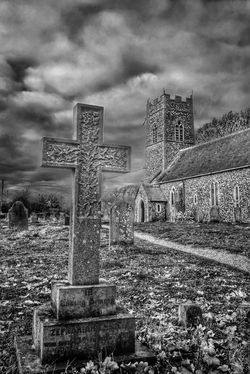 | 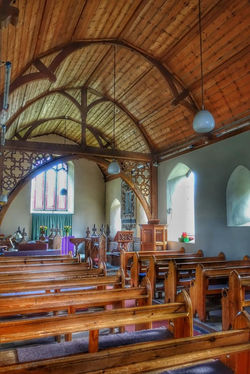 |  |
|---|---|---|
 |  |  |
 | 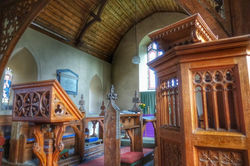 | 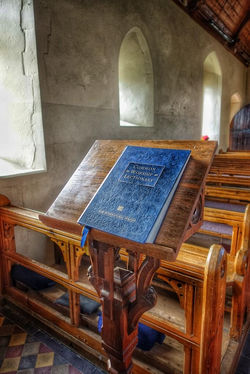 |
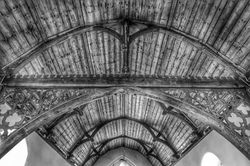 |  |  |
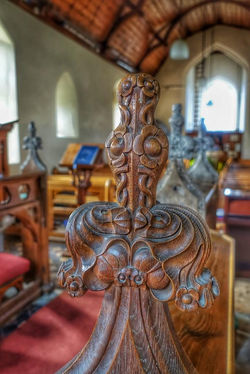 | 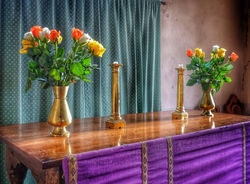 | 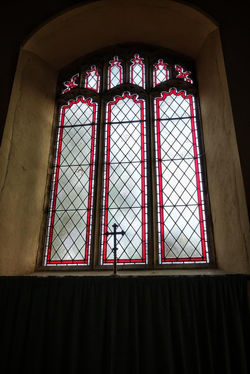 |
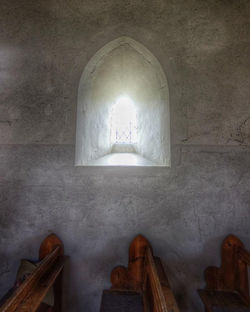 | 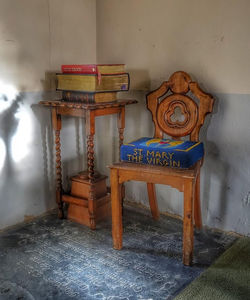 | 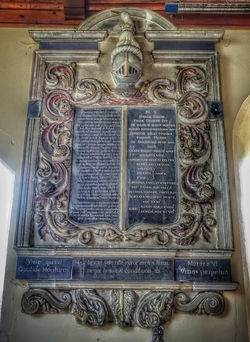 |
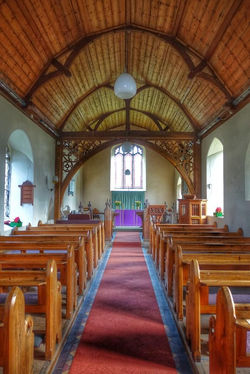 |  | 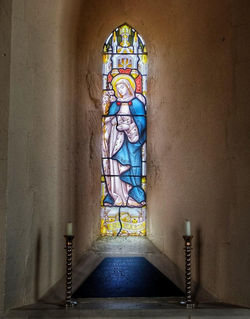 |
 |  |
